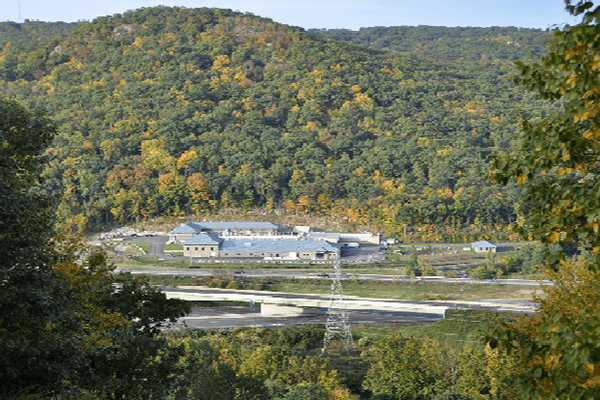|
RCBJ-Audible (Listen For Free)
|
Insider Says A Separate Agency Could Streamline Operations and Approvals But Some Warn About the Overreach of Public Authorities
By Tina Traster
Rockland County is planning to offload Sewer District #1 and establish it as a public authority.
The genesis of the idea began in early spring when County Executive Ed Day suggested the concept to those who run the sewer district, according to sources.
“It was determined that the interests of the residents of the County and the County government itself would be better served by severing the agency responsible for the disposal and treatment of sewage, i.e., the Rockland County Sewer District No. 1 from County government and forming a new, separate authority known as the Rockland County Sewer Authority,” said Day in a statement when asked about the plan.
Sources say the County Legislature’s Fiscal Director was asked to study this but Day said he did not ask for an examination. Instead, he said “after meetings between the County Legislature and members of the Sewer District, it was decided that the Administration would submit a Home Rule Request to the County Legislature, which it did in April.”
Sewer District #1, which has a $53 million budget, is a county agency that services Clarkstown and Ramapo (but not Suffern), as well as 500 parcels in Orangetown. Average homeowners within the Sewer District pay about $600 annually for the service as part of their town and county tax bill.
Sources close to the plans say separating the agency from the county would make it more nimble, obviating the need for layers of approvals for projects and upgrades.
“Right now, there is too much bureaucracy to get things done,” said a source who preferred to remain anonymous but who is participating in the potential shift.
Day said, “This decision is driven by the fact that although the Sewer District is a County agency, the Sewer District itself encompasses only Clarkstown and Ramapo (except for Suffern) and services approximately 500 parcels in Orangetown.”
“Further, the Sewer District frequently requires the issuance of County bonds benefitting only the residents of the district, but it affects the financial position of the County and the County’s ability to borrow for projects to benefit the County government generally and residents countywide.”
To become a public authority, Sewer District #1 will need state approvals to change its charter, which will require approval from the County Legislature. Other sewer districts in the county include Town of Orangetown Sewer District and the Joint Regional Sewerage Treatment Plant (JRSB). Some towns and villages also maintain their own sewer districts within their borders. The JRSB is an an intermunicipal agency that operates a publicly owned treatment works for the municipalities of the Town of Haverstraw, the Village of West Haverstraw and portions of the Town of Stony Point and the Village of Haverstraw.
County legislators are likely to weigh the plan carefully given the potential benefits and minuses of creating a public authority. The most significant case in point is Rockland Green, a public authority that was created in 1994. Some say public authorities are fertile ground for awarding dodgy contracts and handing out patronage jobs.
A sewer district is a defined geographic area, or jurisdiction, established by a local government to collect, treat, and dispose of wastewater for the properties within its boundaries. These districts operate and maintain shared sewer lines, pump stations, and wastewater treatment facilities, which are funded through user fees and taxes.
A good place to begin is to define a Public Authority and how it functions differently than town or county government. Public Authorities are like private corporations but are created by the state – generally through a legislature, not a governor – to advance public interests, notably infrastructure. Unlike state-funded agencies, which are accountable to the state, public authorities maintain a great deal of independence. They are typically governed by boards of directors appointed by elected officials to serve fixed terms.
The Rockland County Solid Waste Management Authority Enactment Act was adopted by the Rockland County Legislature on July 19, 1994. Oddly, rather than the Authority’s board being appointed by elected officials, its board is made up of elected officials. In essence, the board doesn’t answer to anyone other than the board, but these individual elected officials do answer to their constituents. When it came to changing its charter to include animal management in 2022, it needed approval from the Rockland County Legislature. The Rockland County Solid Waste Management Authority changed its name to Rockland Green. In late 2022, Day agreed to lease the county-owned facility where Hi Tor Animal Shelter had run a nonprofit shelter supported by towns and donations for 50 years to Rockland Green for $1 per year.
But when it comes to spending decisions, Rockland Green does not face public scrutiny. Public Authorities basically have an open checkbook supported by its power to tax. There is no further input nor oversight on these taxpayer-impacted decisions from any other branch of Rockland’s government.
Many county residents are unaware of Rockland Green’s role and its impact on their taxes despite the large purse it controls. Many say it is time for Rockland County to re-absorb Rockland Green’s functions under county control to create better oversight and accountability, especially given the magnitude of public debt related to the future animal shelter, the bevy of lawsuits, and ballooning legal costs. There is no need for voter approval on anything that relates to the future shelter or the management of animals.
The authority has a history of underestimating project costs. Rockland Green’s Materials Recovery Facility (MRF) in Hillburn, which was bonded for $35 million with taxpayer money, required more than 175 “change orders” or increases to the bottom line. Change orders increased some contracts by 15 percent or more, and in one case by over $1 million.
While Rockland Green has bonded $18 million for the shelter project, the public authority is tapping into a $36 million surplus to pay for a raft of improvement projects at its headquarters. Budget watchers are asking why the public will be taxed to pay interest as high as 6.25 percent and principal totaling in excess of $40 million for the shelter over 30 years when the public authority has such deep pockets.
Rockland Green may serve as a “canary in the mine shaft” if the RCSD1” breaks off to become a separate and independent agency. While it would eliminate a line item on the county budget, taxpayers will still foot the bill for the service.
The County’s proposed 2026 $913 million budget includes a line item for the Sewer District.
The Sewer District, founded in 1962, operates and maintains the major interceptors and pumping stations in the system and all sewers within the Villages of Spring Valley, New Square, Hillburn, and Sloatsburg. The Towns of Ramapo and Clarkstown maintain most of the 8″ diameter sewers. The District’s wastewater treatment facilities are located in Orangeburg and Hillburn, New York.
The wastewater treatment plant was originally constructed to treat 10 MGD. Development in Rockland County resulted in the expansion of the treatment facility to 28.9 MGD in the mid 1980s.
In 2000, the District’s Board of Commissioners and the Rockland County Legislature extended the Rockland County Sewer District boundaries to provide sewer services to the Villages of Sloatsburg and Hillburn and a portion of the Town of Ramapo at the request of such municipalities. The provision of sewer services to these municipalities required the construction of a 1.5 million gallons-per-day advanced wastewater treatment plant (AWTP), sewer lines, four pump stations, and force mains. The AWTP and the pump stations are operational, sewer construction is complete in the Village of Hillburn and a portion of the Village of Sloatsburg, and homes are connecting.














